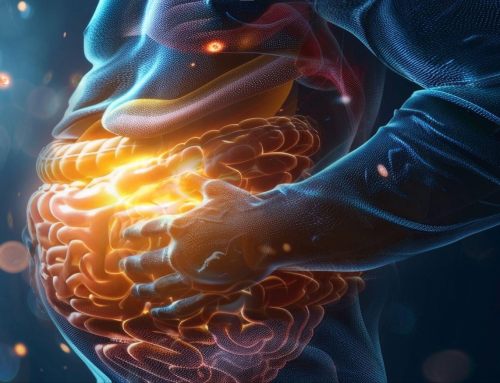Role of Methylation in Menopause and Strategies for Improvement
For practitioners, balancing hormones at the point of menopause is challenging, even without complications from methylation. Methylation is involved in countless processes in the body, so it should be unsurprising that menopause and imbalanced methylation impact each other and worsen symptoms.
Separating methylation and menopause symptoms and tracking the root cause is challenging because of significant overlap, but is worth the effort because teasing out methylation issues and resolving the root cause reduces the burden on the body, allowing menopause interventions to work better. Menopause and methylation are deep and wide subjects in their entirety. Therefore, this article will focus on only a few examples of methylation’s impact on menopause, and ways to improve methylation issues that impact menopause.
Menopause
Menopause is a time of many changes in a woman’s body as her reproductive capability wanes with age. Transitioning to the end of childbearing years can be an unpleasant experience due to fluctuating hormones, causing many seemingly unrelated symptoms. For such sufferers, removing even small burdens to the system can result in the remediation of fatigue, brain fog, temperature variations, and inability to sleep.
This slow cessation of menses involves the waning of fertility hormones to the point of irreversibility, with estrogen levels being the significant determinant.
The Role of Estrogen in Menopause
Estrogen is the primary steroid hormone in female physiology that determines fertility. Ovaries make most of the estrogen in a woman’s body, though it can be produced elsewhere. Receptors for estrogen can be found all over the body, for example, in the brain, reproductive organs, liver, fat, blood vessels, stomach, small intestine, and skin. Receptors exist where estrogen has influence, so the health of the reproductive system, brain, mood, bones, muscles, heart, and gastrointestinal system depends on healthy levels or having suitable forms of estrogen.
In menopause, estrogen production drops as part of natural aging. Some base amount of estrogen needs to be circulating for many organs to maintain good function. Indeed, estrogen levels that are too low or fluctuate wildly tend to be the driver of menopause-related symptoms.
Symptoms of Menopause (1, 2):
- Fatigue or chronic fatigue
- Mood changes, mood disorders
- Inflammation (and resulting aches and pains)
- Memory issues
- Temperature fluctuations
- Menstrual irregularities
Methylation might not be the first place a practitioner looks at when treating menopause. However, it could be a pretty effective avenue to explore, especially if traditional menopause treatments prove ineffective.
How Does Methylation Impact Menopause?
Methylation refers to the addition of a methyl group to an organic molecule. A methyl group consists of one carbon bonded to three hydrogen atoms, CH3. Adding the methyl group to a molecule depends upon methyl donors, which can supply the CH3. One of the biggest methyl donors is S-adenosylmethionine (SAM), a product of the methionine cycle. Note that the mechanism of methylation is reasonably versatile and reaches every tissue in the body because the target molecule of methylation can be many different things, including DNA, neurotransmitter substances, small molecules, RNA, vitamins, lipids, hormones, proteins, and histones.
In methylation, the methyl group’s attachment changes the molecule’s expression, either allowing a different function or suppressing the function. The results of methylation of many of these molecules can impact menopause positively or negatively. Additionally, the problems can occur due to an overabundance of methylation (hypermethylation) or a lack of adequate methylation (hypomethylation).
Two Cases of Methylation Affecting Menopause Through Genetic Mutations: MTHFR and COMT
Two common genetic issues that may cause menopausal women to present methylation issues to doctors are specific genotypes of methylenetetrahydrofolate reductase (MTHFR) and Catechol-O-Methyltransferase (COMT) genes.
1. MTHFR MUTATIONS & MENOPAUSE
Methylenetetrahydrofolate reductase (MTHFR) genes are intimately involved in folate metabolism (3).
Reading about MTHFR can be confusing for a few reasons. One reason is that the folate cycle is intimately connected to the methionine cycle by MTHFR. There are many steps in both cycles, and they each feed into the other and themselves (4).
The other reason the subject of MTHFR can be confusing is that MTHFR refers to both a set of genes (DNA blueprints) and the enzyme the blueprint makes if the instructions are followed, methylenetetrahydrofolate reductase. Many publications don’t specify if “MTHFR” refers to the genes or the enzymes, so it must be derived from context. When italicized, MTHFR refers to the genes; otherwise, it refers to the enzyme.
There is a high rate of mutations in MTHFR genes that can negatively impact menopausal women.
DNA Methylation and MTHFR Mutations
Interestingly, DNA methylation can cause a string of events (indirectly) that ends in a single point or double mutation, which can change the amino acids in a base pair. This change can happen at the MTHFR regions of a DNA strand. Environmental toxins can cause the same outcome. Both can make a change (mutation) in the heritable base pair. Mutations may be heritable because, at birth, each person gets one copy of the allele from the mother and one from the father to form the base pair.
The location on DNA that many of the MTHFR effects come from are the locations noted as 1298 and 677. These contain the code for MTHFR enzymes which aid in folate metabolism, converting folic acid into its methylated, active form, which helps homocysteine convert to methionine (keeping homocysteine from building up in the serum). MTHFR enzymes have other actions as well, explained below.
Often, if there is a mutation, one or more amino acids are substituted at locations 677, 1298, or both locations, affecting the amount and activity of MTHFR enzymes. Location 677 typically has two cystines as its base pair, “CC,” one amino acid inherited from the mother and one from the father. However, a mutation could be thymine (T) passed down instead of cysteine, forming “CT” if one parent passed thymine or “TT” if both parents did.
MTHFR Mutations Affect B Vitamin Methylation (Activation)
There’s another way methylation is involved in the MTHFR mutation story. More mutations in 1298 and 677 often result in a more severe impact on the normal functioning of MTHFR enzymes. Not only is there a reduction of MTHFR enzyme function (5), one worrisome repercussion is less methylated, activated folate (vitamin B9) circulating in the system.
Methylation of Folate & the Folate Cycle – The active form of the vitamin folate, 5-methyltetrahydrofolate (5-MTHF), is created through methylation by MTHFR enzymes. Only the active form of folate is immediately usable by the body. This active form of folate then assists the homocysteine-methionine cycle, remethylating homocysteine, which converts it back to the amino acid methionine (6). Without 5-MTHF, excess homocysteine cannot be converted back into (less harmful) methionine.
Methylation of B12 & the Methionine Cycle – Cobalt, the basis of vitamin B12, can undergo two different types of methylation. One type of methylation that cobalt undergoes is “reductive methylation,” where an oxidized, inactive cobalamin is repaired by transferring a methyl group from SAM to the cobalt atom (7). The other type of methylation cobalt undergoes is “oxidative methylation.” Both processes result in the active form methylcobalamin, which is immediately usable by the body. Without methylcobalamin, the methionine cycle (where homocysteine converts back to methionine) cannot be completed.
MTHFR 677 Genotypes and Decreased Methylation of B Vitamins – One of the most significant outcomes of MTHFR mutations is the increased risk for vitamin B12 and folate deficiencies. MTHFR 677 CT and TT genotypes have strong associations with both folate and B12 deficiencies (8, 9).
However, there’s a complication in the assessment of deficiency. It’s easy to measure folate and B12 levels in serum, but the activated, methylated forms cannot currently be measured directly. Instead, the blood measurement includes both the inactivated and activated forms. This grouping of active and inactive together in the measurement can lead to a deficiency going unnoticed if there is enough total vitamin present in serum but not enough activated vitamin to be used by the body.
Impacts of MTHFR Mutations on Menopause:
Reduced methionine impacts hormone production. MTHFR mutations cause a reduction in the activity of the MTHFR enzymes. With the reduced activity of the enzymes, there is less methionine being made, with a simultaneous slow build-up of homocysteine in the blood. Methionine is essential for synthesizing estrogen, progesterone, and cholesterol precursors, while high homocysteine is associated with many unfavorable chronic conditions.
Increased homocysteine in menopause exacerbates atherosclerosis risk. High homocysteine is an “independent risk factor for atherosclerosis and cardiovascular disease” (10), not taking into account any effects from estrogen levels. However, studies show that estrogen administration lowers the risk of atherosclerosis, and natural menopause increases the risk of atherosclerosis (10). High homocysteine plus the state of menopause has prompted the use of estrogen therapy in menopause to reduce the risk of atherosclerosis.
Symptoms of MTHFR Genetic Mutations (12, 13):
- Depression, mental health conditions
- Attention deficit hyperactivity disorder (ADHD)
- Anemia
- High levels of homocysteine, which increases risks for dementia, stroke, blood clots, heart attack, heart disease, and osteoporosis
- Symptoms of low B12: fatigue, weakness of muscles, variable mood
- Symptoms of anemia: fatigue, weakness, arrhythmia, headaches
Although they may not be the only factor, mutations in MTHFR location 677 and their impact on B vitamin methylation are associated with cardiovascular disease, various cancers, depression, schizophrenia, and increased risk for birth defects (11). These consequences may be due to the mutation’s reduced ability to convert the amino acid homocysteine back into methionine, completing a cycle and helping to maintain proper homocysteine levels. Unchecked, homocysteine can then build up in the blood and be a driver for cardiovascular conditions and many other health issues.
Mutations in MTHFR location 1298 are associated with disease processes, such as cancers, cardiovascular disease, higher risk of birth defects, and male infertility (11).
2. COMT MUTATIONS AND MENOPAUSE
Estrogen, testosterone, progesterone, thyroid hormones, and cortisol are all hormones that get methylated at some point in their life cycle. Of interest to menopause is the methylation ofestrogen and its breakdown by the enzyme Catechol-O-Methyltransferase (COMT). The liver metabolizes estrogen, by phase I and II detoxification, with phase II providing methylation of the more harmful estrogen metabolite 4-hydroxyesterone (4-OH), subduing its activity and allowing it to be excreted. The hormone methylation of estrogen is achieved by the COMT enzyme, which also metabolizes neurotransmitter substances and other hormones.
Unfortunately, COMT genes in the DNA location 158 can also be compromised by point mutations triggered by DNA methylation, environmental toxins, or nutritional deficiencies. Substitutions in the base pair of COMT genes can result in the Met/Met or +/+ genotype instead of Val/Met, which is the more common genotype. This causes a slowdown in the methylation and breakdown of all catecholamines: notably for menopause, the catecholamines estrogen and dopamine. If the compounds can’t be broken down properly, they cannot be excreted from the system.
Met/Met COMT Genotype Impact on Estrogen – For many menopausal women, symptoms appear as estrogen levels drop. COMT Met/Met genotypes in menopause would theoretically have more circulating estrogen because they can’t break it down and excrete as efficiently as the other genotypes. However, the onset of menopause in the presence of this genotype may still disturb the relative balance or fluctuations between estrogen and progesterone, causing adverse symptoms.
Met/Met COMT Genotype Impact on Dopamine – If COMT is not produced in sufficient volume to break down dopamine in those with the Met/Met genotype, the dopamine levels in the brain can build up, affecting cognition. With higher brain levels of dopamine comes the ability to focus better. However, the ability to quickly adapt to external stimulation can suffer, causing anxiety (14). There is an association of Met/Met with anxiety, which can exacerbate menopause symptoms.
Symptoms of COMT Met/Met Influence:
- Low COMT activity (low methylation of catecholamines)
- Higher levels of dopamine due to lack of breakdown by COMT
- More vulnerable to stress
- Higher processing of information under stress
- Advantages in tasks requiring attention or memory
- Feelings of anxiety
Collision Course – When Menopause Meets Methylation Issues
When the conditions of symptomatic menopause and imbalanced methylation due to COMT or MTHFR mutations collide, it may be difficult for healthcare practitioners to relieve menopause symptoms through exogenous hormones and other therapies designed to balance hormones. Menopause may exacerbate previously existing symptoms from imbalanced methylation that have not been addressed in the patient.
Methylation issues resulting in fatigue, for example, may have been tolerable pre-menopause, but when the transition of menopausal hormones occurs, the fatigue becomes intolerable. The patient now seeks out help because it’s difficult to participate in society or even attend work. Practitioners attempting to alleviate the fatigue only from the perspective of treating menopause may never be able to provide enough relief to the patient who has underlying methylation issues.
Imbalanced Methylation and Menopause- Overlap of Symptoms
Symptoms of methylation issues are very similar to the many symptoms of menopause. Having one problem could make the other matters worse by:
Exacerbating mood swings – Methylation symptoms such as anxiety, depression, and attention or memory issues stemming from MTHFR and COMT can exacerbate swings associated with low estrogen status of menopause, such as moodiness (15).
Exacerbating fatigue – Fatigue reportedly affects about 85% of postmenopausal women, according to a 2018 study that researched stress and fatigue in menopause (16). Unfortunately, B12 and folate deficiencies also result in feelings of weakness and fatigue (17). We now know that MTHFR mutations can contribute to a lack of usable methylated B12 and folate, contributing to deficiencies.
Exacerbating the loss of bone density – Low estrogen has been firmly established as a driver for loss of bone density and increases the risk of osteoporosis (18). Having B12 deficiency as a result of MTHFR 677 mutations (19) could worsen the situation (20). In the Framingham osteoporosis study, all subjects with low B12 status had lower averages of bone mass density than subjects with higher B12 status, even after adjusting for menopause and estrogen usage (20).
Affecting cancer rates in postmenopausal women – One popular area of research is studying cancer risk after menopause under different conditions. Unfortunately, significantly lower levels of vitamin B12 have been shown in postmenopausal women with breast cancer, and women with low B12 status have a higher breast cancer risk (21). Diets low in methyl donors can be a risk factor for breast cancer of the methylated estrogen receptor type (22), and researchers continue to find additional connections.
STRATEGIES & NATURAL REMEDIES FOR TREATING METHYLATION ISSUES IN MENOPAUSE
A good methylation test will help shorten the time to diagnosis and treatment plan. In the past few years, more tests have become available that consider various aspects of methylation. In addition to testing the genes that affect methylation, such as MTHFR, newer tests also measure metabolites of methylation, such as homocysteine, as well as the abundance of methyl group donors, including methionine and choline (11).
While hypomethylation is more common, the possibility for hypermethylation exists, especially for the Met/Met COMT genotype. Methylation tests will give indications of over- or undermethylation and sometimes suggest remedies.
The following are some common strategies for addressing hypomethylation issues.
1. Provide raw materials in the diet
Methyl groups can be synthesized within the body or come from the diet. Providing enough raw material in the diet is one way to ensure there is no limit to methylation being imposed through the diet. (For hypermethylation, dietary restriction might be helpful.)
- Folate: leafy green vegetables, beans, eggs, seafood, poultry, meat, grains (24)
- B12: liver, clams, salmon, beef (25)
- Choline: beef, egg, chicken, potatoes, beans, quinoa (26)
- Betaine: wheat bran or germ, spinach, beets, shrimp (27)
- Serine: meat, fish, dairy, eggs, spinach, beans, asparagus (28)
- Glycine: meat, fish, eggs, dairy, pumpkin seeds, pistachio nuts, sesame seeds
2. Provide precursors or methylated vitamins
Another way to help imbalanced methylation is through nutritional supplementation. Unless there is an unusual health issue, the body can use precursors to create the needed compounds.
- Activated folate: also known as methyl B9, L-methylfolate, 5-MTHF (5-Methyltetrahydrofolate), L-5MTHF, metafolin® or quatrefolic®
- Activated B12: methylcobalamin, hydroxocobalamin, adenosylcobalamin
- SAMe: methyl donor and precursor to hormones and neurotransmitters
- 5 HTP: the precursor to serotonin, melatonin, and norepinephrine(29)
- Other B vitamins: B2, B6, or a B complex with methyl folate and methyl B12
3. Provide co-factors
Testing for nutritional deficiencies might be warranted to determine what co-factors are missing from the diet. Some methylation tests will list co-factors so that further testing can include them.
4. Try adaptogens
Adaptogens are derived from plant material or mushrooms and have a self-descriptive name: they help the body adapt to stressors. While adaptogens do not supply plant hormones, their natural compounds from plants tend to bring various systems in the body to balance (homeostasis) (30). Two effective adaptogens are:
- Ashwagandha: a plant that improves sleep and relieves anxiety
- Rhodiola rosea: a plant that improves the symptoms of fatigue yet calms tension or fussiness
Hypermethylation issues may be addressed either by removing raw materials precursors or supplements or by trying adaptogens.
Conclusion
Methylation issues can be the root of unpleasant symptoms exacerbating, or in some cases countering, the forces of menopause. Genetics can be the root cause of methylation imbalances, for which nutrition strategies may be employed. In instances where menopause treatments are not working, especially hormone therapies, it may be beneficial to explore methylation issues and resolve any that are found.
Sources:
- Menopause [Internet]. Mayo Foundation for Medical Education and Research; 2022 [cited 2023 May 8]. Available from: https://www.mayoclinic.org/diseases-conditions/menopause/symptoms-causes/syc-20353397
- What is menopause? [Internet]. U.S. Department of Health and Human Services; [cited 2023 May 8]. Available from: https://www.nia.nih.gov/health/what-menopause
- Common Mutation in Methylenetetrahydrofolate Reductase [Internet]. [cited 2023 May 9]. Available from: https://www.ahajournals.org/doi/full/10.1161/01.cir.94.12.3074
- Folate and Methionine Cycle Chart[Internet]. [cited 2023 May 9]. Available from: https://www.researchgate.net/figure/Folate-cycle-is-coupled-with-Methionine-cycle-During-Folate-cycle-MTHFR-reduces_fig3_313326121
- Homocysteine and MTHFR Mutations [Internet]. [cited 2023 May 9]. Available from: https://www.ahajournals.org/doi/full/10.1161/circulationaha.114.013311
- Födinger M, Hörl WH, Sunder-Plassmann G. Molecular biology of 5,10-methylenetetrahydrofolate reductase. J Nephrol. 2000 Jan-Feb;13(1):20-33. PMID: 10720211.
- Navigating the B12 Road: Assimilation, Delivery, and Disorders of Cobalamin [Internet]. [cited 2023 May 9]. Available from: https://www.jbc.org/article/S0021-9258(19)54550-1/fulltext
- Ni J, Zhang L, Zhou T, Xu WJ, Xue JL, Cao N, Wang X. Association between the MTHFR C677T polymorphism, blood folate and vitamin B12 deficiency, and elevated serum total homocysteine in healthy individuals in Yunnan Province, China. J Chin Med Assoc. 2017 Mar;80(3):147-153. doi: 10.1016/j.jcma.2016.07.005. Epub 2017 Jan 13. PMID: 28094233.
- Hiraoka M, Kagawa Y. Genetic polymorphisms and folate status. Congenit Anom (Kyoto). 2017 Sep;57(5):142-149. doi: 10.1111/cga.12232. Epub 2017 Jul 20. PMID: 28598562; PMCID: PMC5601299.
- Estrogen and homocysteine [Internet]. [cited 2023 May 8]. Available from: https://academic.oup.com/cardiovascres/article/53/3/577/325910
- Methylation Panel Support Guide [Internet]. [cited 2023 May 9]. Available from: https://www.gdx.net/core/support-guides/methylation-support-guide.pdf
- What is an MTHFR mutation? [Internet]. MediLexicon International; [cited 2023 May 8]. Available from: https://www.medicalnewstoday.com/articles/326181
- Homocysteine: Levels, tests, high homocysteine levels [Internet]. [cited 2023 May 8]. Available from: https://my.clevelandclinic.org/health/articles/21527-homocysteine
- Stein DJ, Newman TK, Savitz J, Ramesar R. Warriors versus worriers: the role of COMT gene variants. CNS Spectr. 2006 Oct;11(10):745-8. doi: 10.1017/s1092852900014863. PMID: 17008817.
- Low estrogen: Causes, symptoms, diagnosis & treatment [Internet]. [cited 2023 May 8]. Available from: https://my.clevelandclinic.org/health/diseases/22354-low-estrogen#management-and-treatment
- Taylor-Swanson L, Wong AE, Pincus D, Butner JE, Hahn-Holbrook J, Koithan M, Wann K, Woods NF. The dynamics of stress and fatigue across menopause: attractors, coupling, and resilience. Menopause. 2018 Apr;25(4):380-390. doi: 10.1097/GME.0000000000001025. PMID: 29189603; PMCID: PMC5866170.
- Types of B vitamins: Functions, sources, and deficiencies [Internet]. MediLexicon International; [cited 2023 May 8]. Available from: https://www.medicalnewstoday.com/articles/325292#vitamin-b-12
- Osteoporosis [Internet]. Mayo Foundation for Medical Education and Research; 2021 [cited 2023 May 8]. Available from: https://www.mayoclinic.org/diseases-conditions/osteoporosis/symptoms-causes/syc-20351968
- Shiran A, Remer E, Asmer I, Karkabi B, Zittan E, Cassel A, Barak M, Rozenberg O, Karkabi K, Flugelman MY. Association of Vitamin B12 Deficiency with Homozygosity of the TT MTHFR C677T Genotype, Hyperhomocysteinemia, and Endothelial Cell Dysfunction. Isr Med Assoc J. 2015 May;17(5):288-92. PMID: 26137654.
- Tucker KL, Hannan MT, Qiao N, Jacques PF, Selhub J, Cupples LA, Kiel DP. Low plasma vitamin B12 is associated with lower BMD: the Framingham Osteoporosis Study. J Bone Miner Res. 2005 Jan;20(1):152-8. doi: 10.1359/JBMR.041018. Epub 2004 Oct 25. PMID: 15619681.
- Kim JA, Choi R, Won H, Kim S, Choi HJ, Ryu JM, Lee SK, Yu J, Kim SW, Lee JE, Lee SY. Serum Vitamin Levels and Their Relationships with Other Biomarkers in Korean Breast Cancer Patients. Nutrients. 2020 Sep 16;12(9):2831. doi: 10.3390/nu12092831. PMID: 32947849; PMCID: PMC7550996.
- Zhu K, Williams SM. Methyl-deficient diets, methylated ER genes and breast cancer: an hypothesized association. Cancer Causes Control. 1998 Dec;9(6):615-20. doi: 10.1023/a:1008819210777. PMID: 10189047.
- What are adaptogens & types [Internet]. [cited 2023 May 8]. Available from: https://my.clevelandclinic.org/health/drugs/22361-adaptogens
- Office of dietary supplements – folate [Internet]. U.S. Department of Health and Human Services; [cited 2023 May 8]. Available from: https://ods.od.nih.gov/factsheets/Folate-HealthProfessional/
- The A list of B12 Foods [Internet]. 2018 [cited 2023 May 8]. Available from: https://www.health.harvard.edu/staying-healthy/the-a-list-of-b12-foods
- Office of dietary supplements – choline [Internet]. U.S. Department of Health and Human Services; [cited 2023 May 8]. Available from: https://ods.od.nih.gov/factsheets/Choline-HealthProfessional/
- Betain in Human Nutrition [Internet]. [cited 2023 May 8]. Available from: https://academic.oup.com/ajcn/article/80/3/539/4690529?login=false
- Carballido E, Editorial. List of foods high in serine [Internet]. Botanical-online; 2021 [cited 2023 May 8]. Available from: https://www.botanical-online.com/en/food/serine-rich-foods
- 5-HTP side effects [Internet]. MediLexicon International; [cited 2023 May 8]. Available from: https://www.medicalnewstoday.com/articles/5-htp-side-effects#what-it-is
- What are adaptogens and are they healthy? [Internet]. 2023 [cited 2023 May 8]. Available from: https://health.clevelandclinic.org/what-are-adaptogens-and-what-do-they-do/












